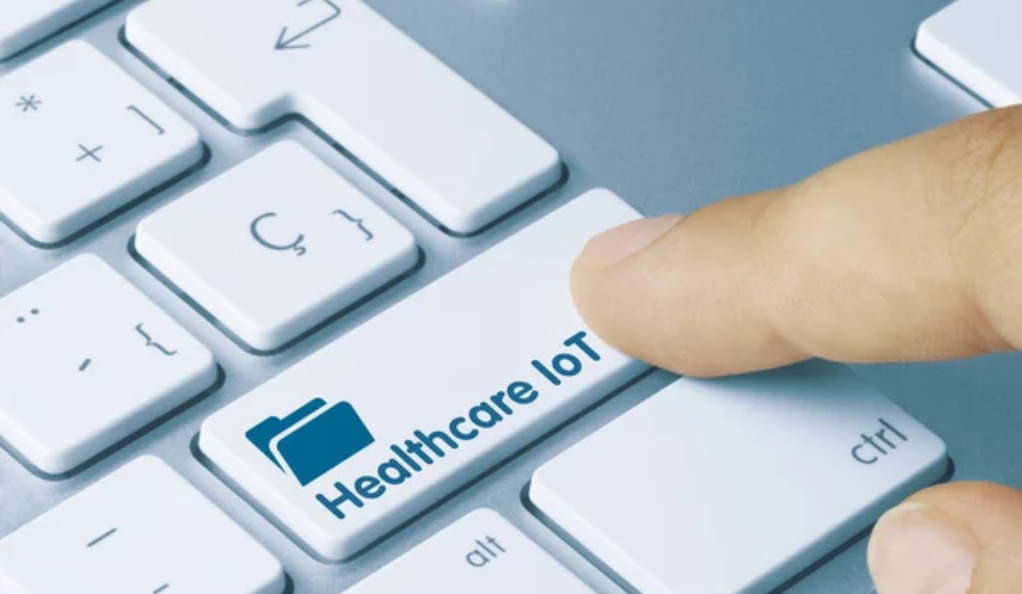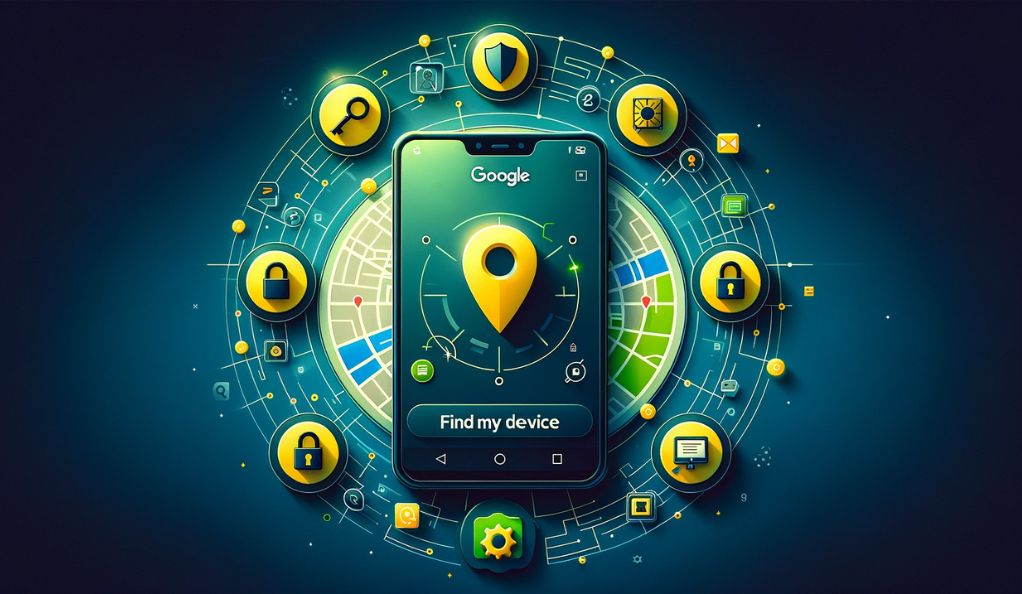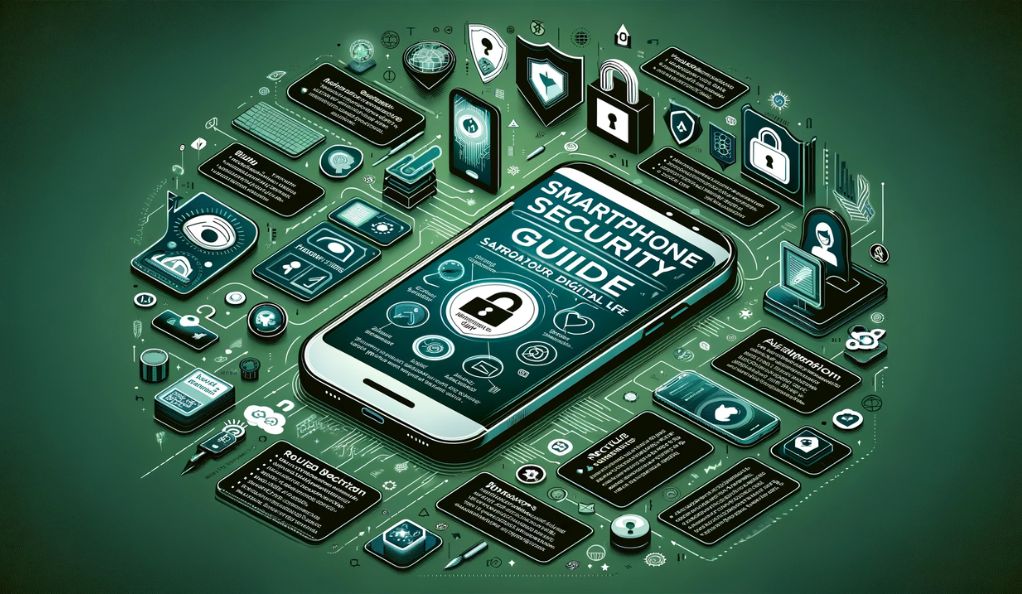The integration of the Internet of Things (IoT) into the healthcare sector has ushered in a new era of innovation and connectivity. From wearable devices that monitor vital signs to smart hospital beds that adjust for patient comfort, the possibilities seem endless. However, with these advancements come significant security concerns that cannot be overlooked.
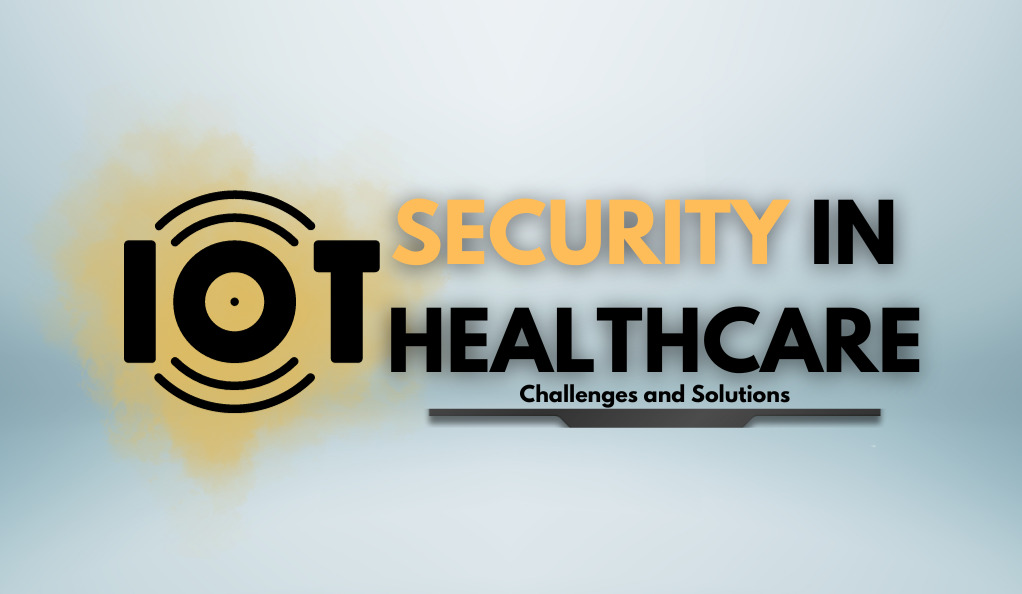
The Rise of IoT in Healthcare
The healthcare industry, traditionally slow in adopting new technologies, has seen a rapid embrace of IoT in recent years. This shift is driven by the potential of IoT to revolutionize patient care, streamline operations, and reduce costs. According to a report by SonicWall, there was a staggering 215.7% increase in IoT malware attacks during 2018, with a further 5% increase in 2019. Such statistics highlight the growing integration of IoT devices in healthcare and the associated risks.
The Importance of Security in Medical IoT
While the benefits of IoT in healthcare are undeniable, the security of these devices is paramount. Each connected device represents a potential entry point for cyberattacks. Such breaches can lead to unauthorized access to sensitive patient data, disruption of medical services, and even direct harm to patients. For instance, a hacker gaining control of a drug infusion pump could alter dosages, leading to life-threatening consequences.
Moreover, the vast amount of data generated and transmitted by these devices necessitates robust security measures. Personal Health Information (PHI), which includes details like medical histories, treatment plans, and even genetic data, is a prime target for cybercriminals. Unauthorized access or leaks of this information can have severe legal, financial, and reputational repercussions for healthcare providers.
The Current State of IoT in Healthcare
The healthcare landscape is undergoing a digital transformation, with IoT at the forefront of this change. The integration of smart devices into medical practices is not just a trend; it’s a necessity driven by the demand for real-time monitoring, data-driven decisions, and enhanced patient care.
Statistics on IoT Malware Attacks in Healthcare
The surge in IoT adoption in healthcare has, unfortunately, been accompanied by a rise in security threats. As per the data from SonicWall, the year 2018 witnessed a significant spike in IoT malware attacks, with a 215.7% increase from the previous year. The subsequent year, 2019, also saw a 5% rise in such attacks. These figures translate to over 32 million attacks annually, emphasizing the urgent need for robust security measures.
Benefits of IoT Data-Driven Analytics for Medical Providers
IoT’s impact on healthcare isn’t limited to devices alone. The data these devices generate is equally valuable. Here’s how data-driven analytics is revolutionizing healthcare:
- Predictive Analysis: By analyzing patient data, healthcare providers can predict potential health issues and intervene proactively. For instance, patterns in a patient’s vital signs might indicate an impending cardiac event, allowing for timely intervention.
- Personalized Treatment Plans: Data analytics enables healthcare professionals to tailor treatment plans to individual patient needs, improving outcomes and patient satisfaction.
- Operational Efficiency: Hospitals and clinics can utilize IoT data to optimize operations, from managing patient flow to ensuring equipment availability and maintenance.
- Cost Savings: With real-time monitoring, unnecessary hospital visits can be reduced, and early detection of health issues can lead to cost-effective treatments.
Applications of IoT in Healthcare
IoT’s integration into the healthcare sector has led to the development of innovative solutions that enhance patient care, streamline operations, and offer new avenues for treatment and monitoring. Let’s delve into some of the prominent applications:
Supply Chain Management
plays a crucial role in healthcare, ensuring that essential equipment, medications, and other vital supplies are available when needed. With IoT, real-time tracking of these assets becomes possible, reducing wastage, ensuring timely replenishment, and optimizing the entire supply chain process.
Remote Patient Monitoring
Through IoT devices, healthcare providers can continuously monitor a patient’s vital signs and other health metrics, even if they are miles away. This not only allows for timely interventions but also reduces the need for frequent hospital visits, offering convenience and cost savings.
Hospital Environmental State Control
Maintaining the right environmental conditions within a hospital, be it air quality, temperature, or lighting, can directly impact patient recovery. IoT devices can monitor and adjust these parameters in real-time, ensuring optimal conditions for patient care.
Telemedicine
Patients can now consult with specialists from the comfort of their homes, with IoT devices transmitting real-time health data. This has been particularly beneficial in areas with limited access to healthcare facilities or for patients with mobility issues.
Interconnected Ambulance
In emergency situations, interconnected ambulances can transmit real-time patient data to the hospital even before arrival. This ensures that the medical team is well-prepared, potentially saving crucial minutes and improving patient outcomes.
IoT Security Vulnerabilities
As the healthcare sector increasingly relies on IoT devices, understanding the potential security vulnerabilities becomes paramount. These vulnerabilities can compromise patient safety, data integrity, and the overall trust in healthcare systems.
Recent Attacks on Medical Devices
Over the past few years, there have been alarming instances of cyberattacks targeting medical devices. For example:
- Pacemaker Hacks: In 2017, the FDA confirmed vulnerabilities in certain cardiac pacemakers that could allow unauthorized users to access and manipulate the device, potentially harming the patient.
- Hospital Ransomware Attacks: Numerous hospitals worldwide have fallen victim to ransomware attacks, with hackers demanding money in exchange for unlocking essential medical equipment and data.
These incidents underscore the tangible threats posed by IoT vulnerabilities in healthcare.
The Potential Risks to Patient Safety
Beyond data breaches, the security vulnerabilities of IoT devices can have direct, life-threatening consequences:
- Device Malfunction: A compromised device, be it an insulin pump or a respiratory aid, can malfunction, leading to incorrect dosages or complete failure.
- False Data Transmission: Hackers can manipulate the data transmitted by a device, leading to misdiagnoses and incorrect treatments.
The Challenge of Legacy Equipment in Healthcare
One of the significant challenges in securing healthcare IoT is the presence of legacy equipment. These are older devices and systems that:
- Lack Modern Security Features: Many were designed before the current wave of cyber threats and thus lack the necessary security protocols.
- Are Difficult to Update: Due to their age and design, these devices often cannot be easily updated with the latest security patches.
Such equipment, while still functional, presents a significant security risk, as they can be easier targets for cyberattacks.
Major IoT Security Risks in Healthcare
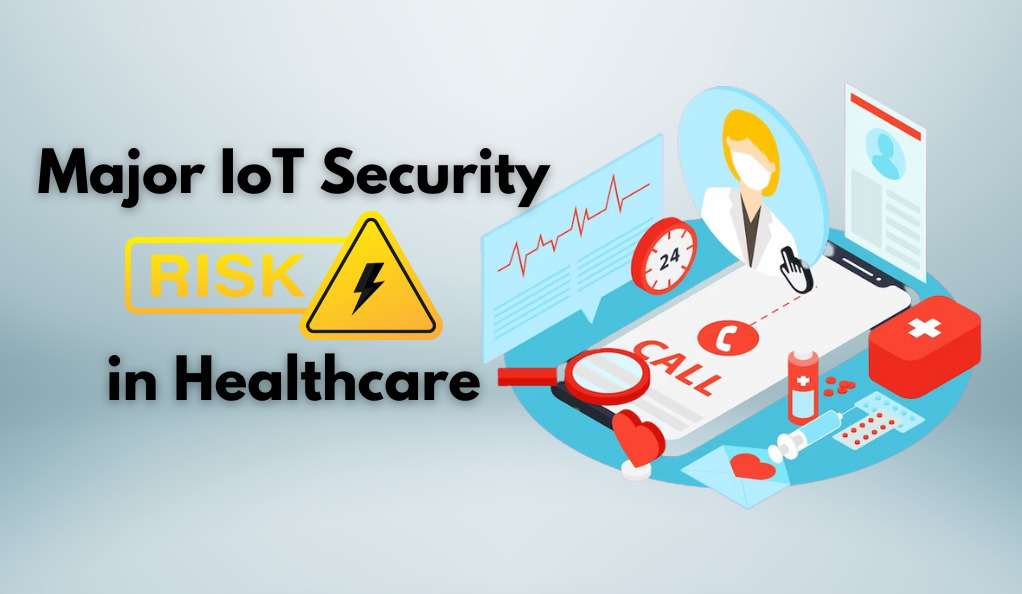
In the rapidly evolving landscape of healthcare technology, the integration of the Internet of Things (IoT) has brought forth several security concerns. One of the most pressing issues is the potential Disclosure of Personal Health Information (PHI). This sensitive data, if accessed by unauthorized entities, can lead to identity theft and other malicious activities. Closely related to this is the risk of Privacy Violations. With devices continuously monitoring and transmitting data, there’s a heightened risk of unauthorized surveillance or data selling without the patient’s consent.
Another significant concern revolves around Data Ownership Issues. As IoT devices generate vast amounts of data, ambiguities arise regarding who truly owns this data: the patient, the healthcare provider, or the device manufacturer? Additionally, Location Data Concerns have emerged. The continuous tracking of a patient’s location can lead to privacy breaches and potential misuse of this information.
The healthcare sector also faces threats from DDoS Attacks, which can overwhelm systems, causing disruptions in critical medical services. A more targeted threat comes in the form of Medjacking, which refers to the hijacking of medical devices. In such scenarios, hackers can take control of a device, potentially causing direct harm to patients. Lastly, the overarching risk of Unauthorized Access to Data persists. This can lead to data manipulation, misdiagnoses, and incorrect treatments, all of which can have dire consequences for patient health and safety.
Best Practices for Securing Healthcare IoT
In the rapidly evolving landscape of healthcare, the integration of the Internet of Things (IoT) has brought forth both opportunities and challenges. Ensuring the security of these devices and the data they handle is paramount. Here’s a comprehensive look at the best practices healthcare organizations should adopt:
Ensuring Network Security
A foundational step in securing IoT is to fortify the network. This involves the use of firewalls and intrusion detection systems that monitor and control incoming and outgoing traffic, identifying and blocking potential threats. Regular network assessments further ensure that all devices remain compliant with security standards.
Applying Context-Aware Security Approaches
Modern security isn’t just about barriers; it’s about understanding behavior. By employing behavioral analytics, any deviation from the typical behavior of a device or user can be flagged as suspicious. Additionally, geo-fencing techniques restrict device functionality based on its location, adding another layer of security.
Device Centralization and Segmentation
Managing IoT devices centrally allows for easier monitoring, updates, and troubleshooting. Furthermore, by segmenting the network, a breach in one segment doesn’t compromise the entire system. This division ensures that critical systems remain isolated and protected.
Hardware-Level Protection
Beyond software, the physical device needs protection. Secure boot mechanisms ensure that devices only operate using software verified by the manufacturer. Additionally, devices should be equipped to detect and respond to any physical tampering attempts.
Data Encryption Techniques
Data, both at rest and in transit, is a prime target for cybercriminals. Employing end-to-end encryption ensures that data remains unreadable even if intercepted. Regularly updating encryption keys further enhances data security.
EMI Shielding for Devices
Electromagnetic interference can disrupt the functionality of IoT devices. Proper shielding ensures that devices operate without external interference, and regular testing ensures compliance and effectiveness.
Visibility Maintenance for Tracking Devices
Continuous monitoring of all devices is essential. Real-time tracking ensures functionality, detects security breaches, and facilitates timely updates. Moreover, maintaining a comprehensive inventory aids in swift response during security incidents.
Recommendations for Healthcare Organizations

For healthcare organizations to truly harness the potential of IoT without compromising on security, a proactive approach is essential. Here are some recommendations:
Adopting IoT Security Best Practices
- Continuous Education: Staff should be regularly trained on the latest security threats and best practices.
- Vendor Vetting: Before integrating any IoT device, the manufacturer’s security protocols and track record should be thoroughly vetted.
Introducing Effective Authentication Measures
- Multi-Factor Authentication: Access to devices and data should require multiple forms of authentication, reducing the chances of unauthorized access.
- Biometric Verification: Using unique biological traits like fingerprints or retina scans can provide an added layer of security.
Keeping Track of Devices and Assets
- Regular Audits: Periodic checks can ensure that all devices are accounted for and operating as intended.
- Retirement of Obsolete Devices: Outdated devices that can’t be updated to current security standards should be retired and replaced.
Segregating Traffic and Restricting Access
- Role-Based Access: Not every staff member needs access to all data. Assigning access based on roles can minimize potential breach points.
- Guest Networks: Visitors or non-essential devices should be placed on separate networks, isolated from critical systems.
Utilizing Specialized IoT Security Solutions
- Dedicated Security Software: There are security solutions tailored specifically for IoT. Investing in these can provide protection optimized for the unique challenges of IoT.
Conclusion
The integration of IoT into healthcare signifies a transformative era, offering real-time patient monitoring, tailored treatments, and heightened operational efficiencies. As technology progresses, we can expect even more advanced diagnostics, a seamless blend of IoT data with Artificial Intelligence, and an empowered patient role in healthcare decisions. However, this promising trajectory also brings forth challenges, especially concerning security. The dynamic nature of technology demands that threats and vulnerabilities are continuously addressed.
Healthcare organizations must prioritize regular updates, collaborations with device manufacturers and cybersecurity experts, and comprehensive education for all staff members. Recognizing and proactively addressing potential pitfalls will be crucial. As the healthcare sector delves deeper into the IoT realm, a balanced approach—embracing the immense benefits while staying vigilant against threats—will be the key to harnessing its full potential safely and effectively.

